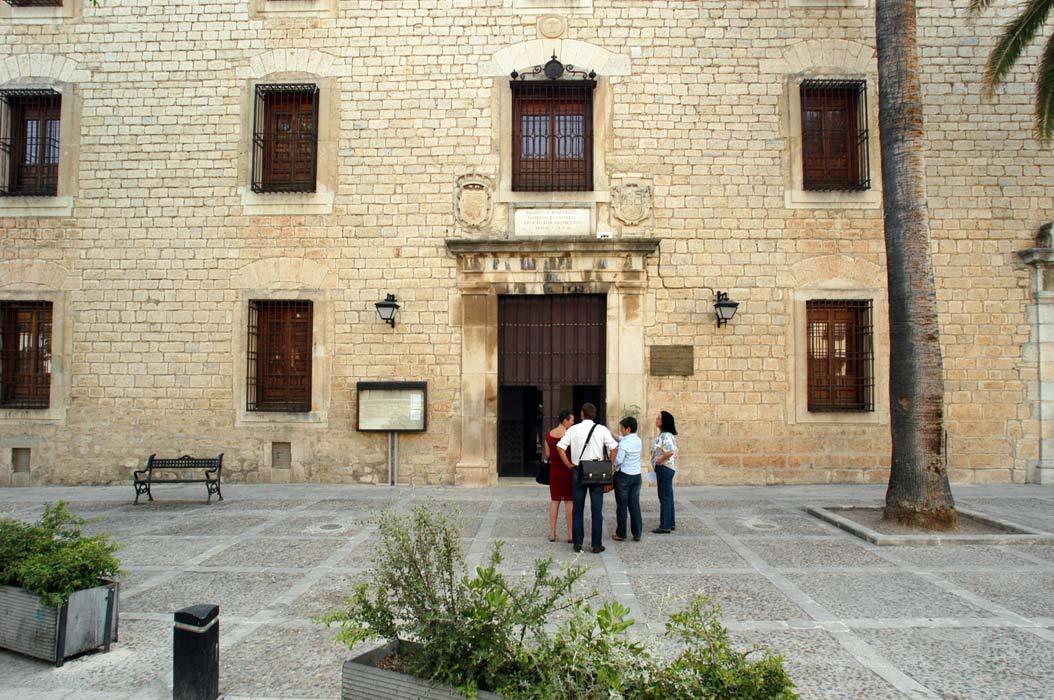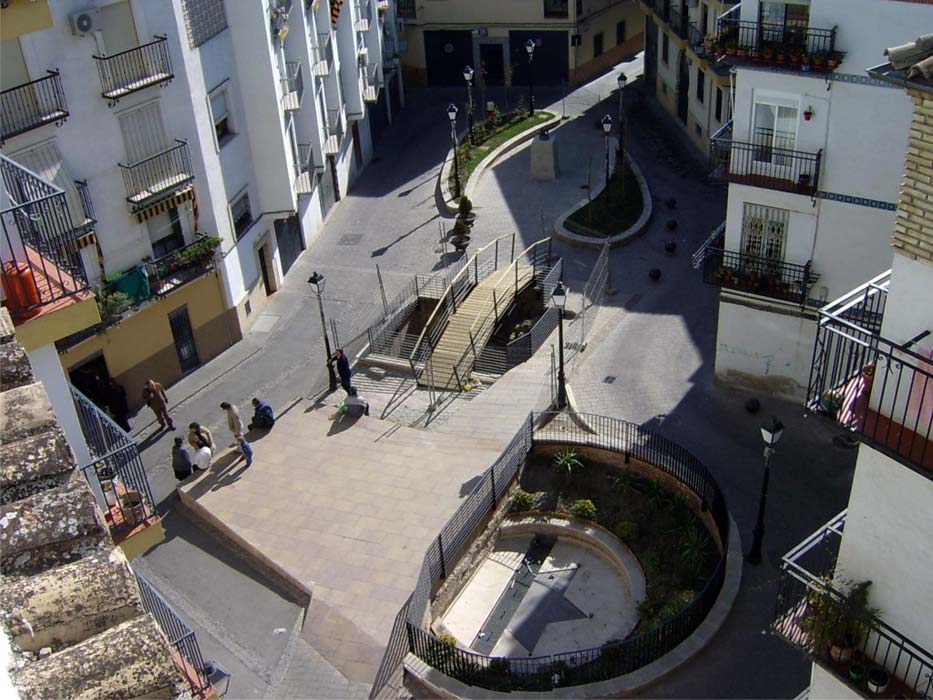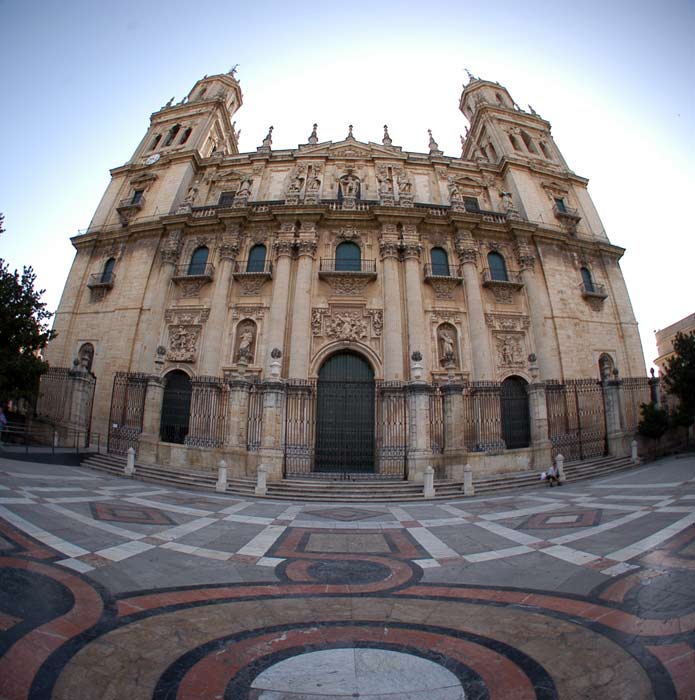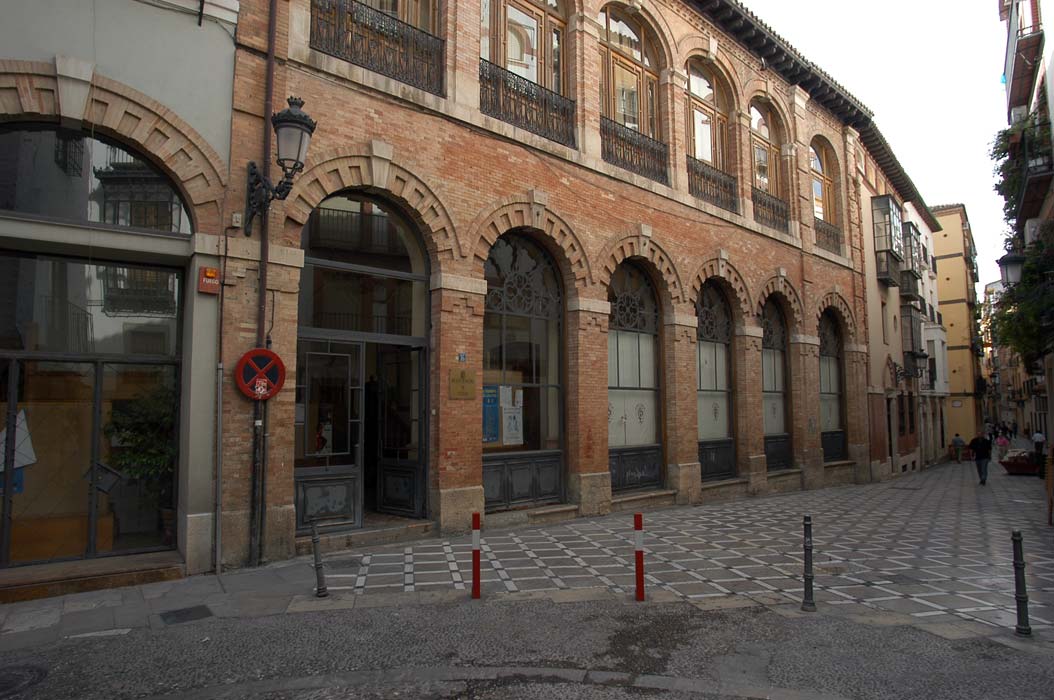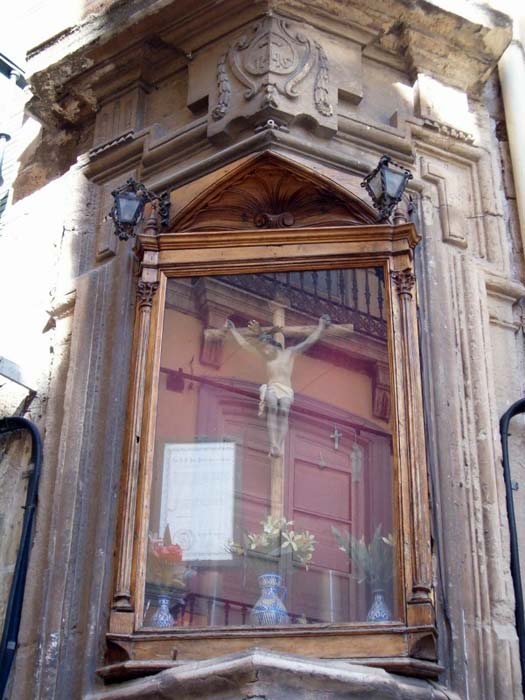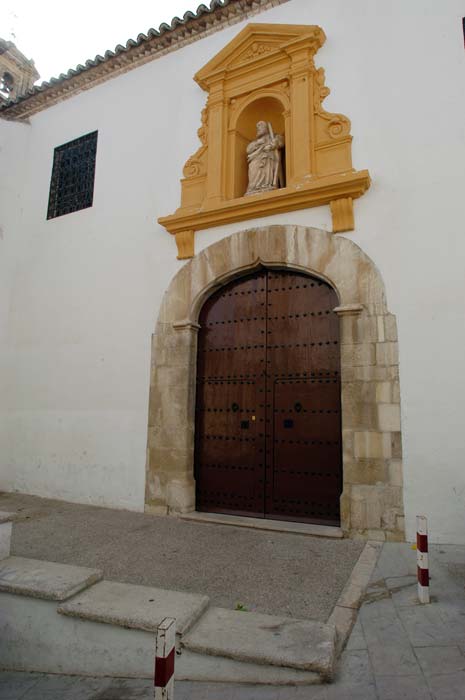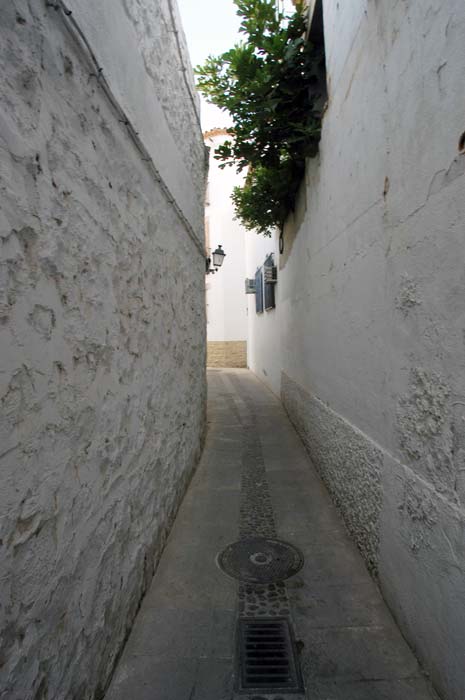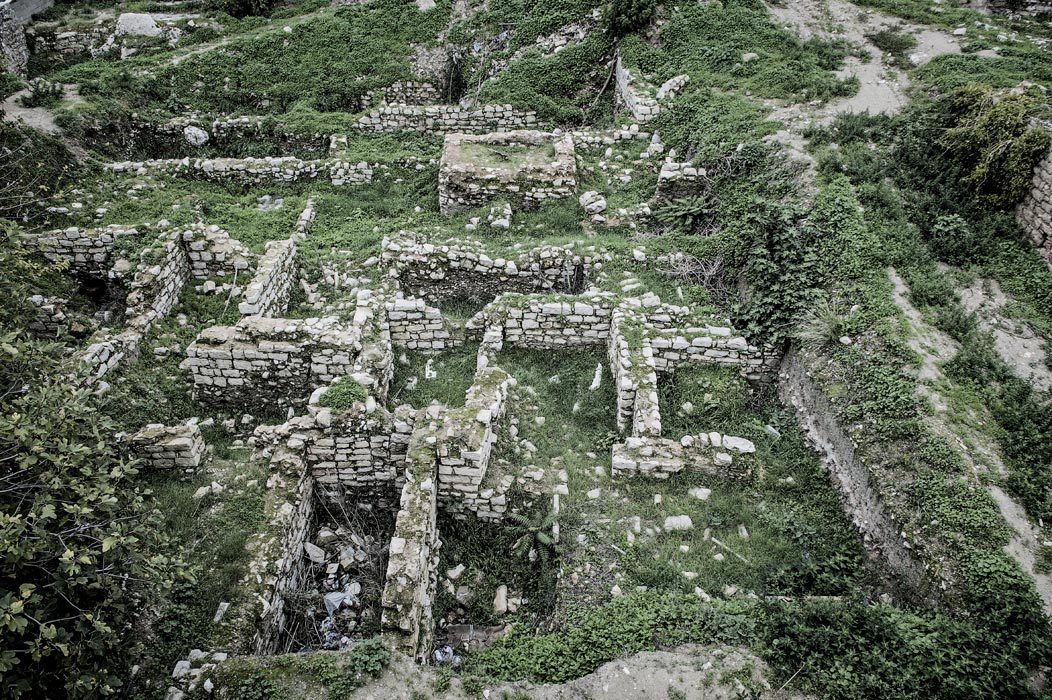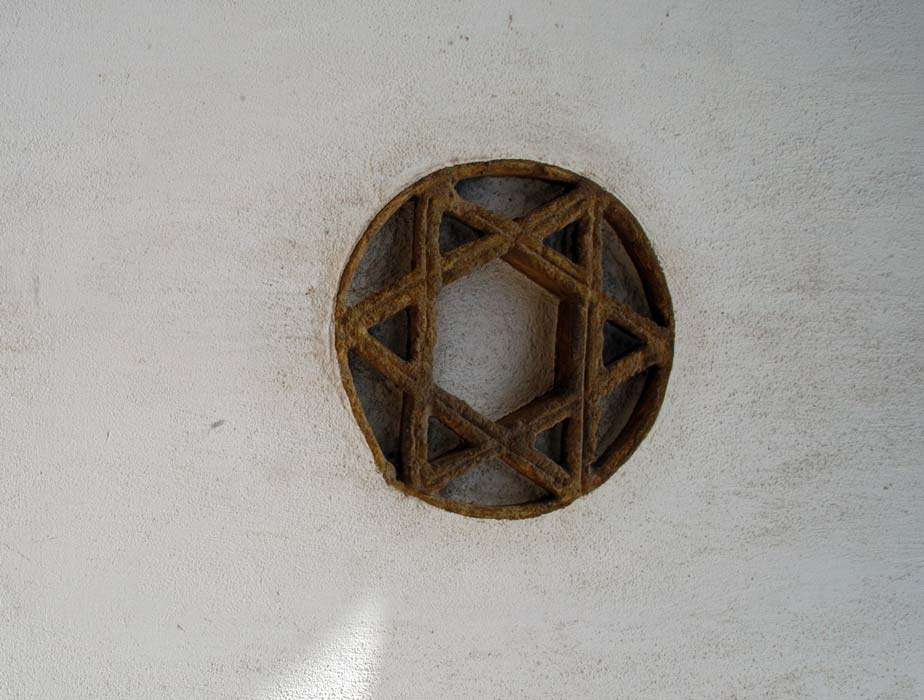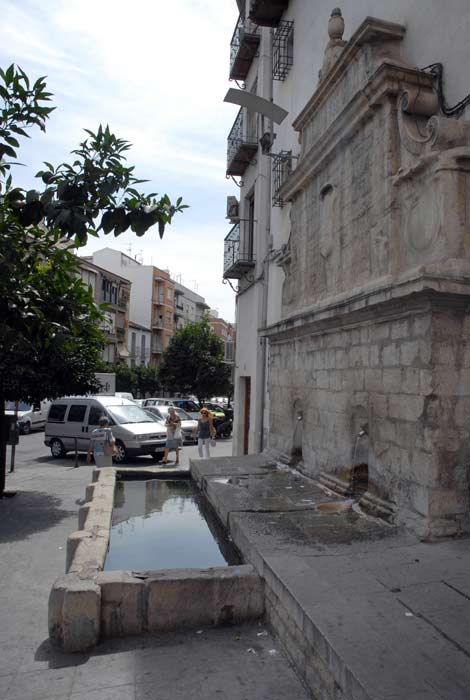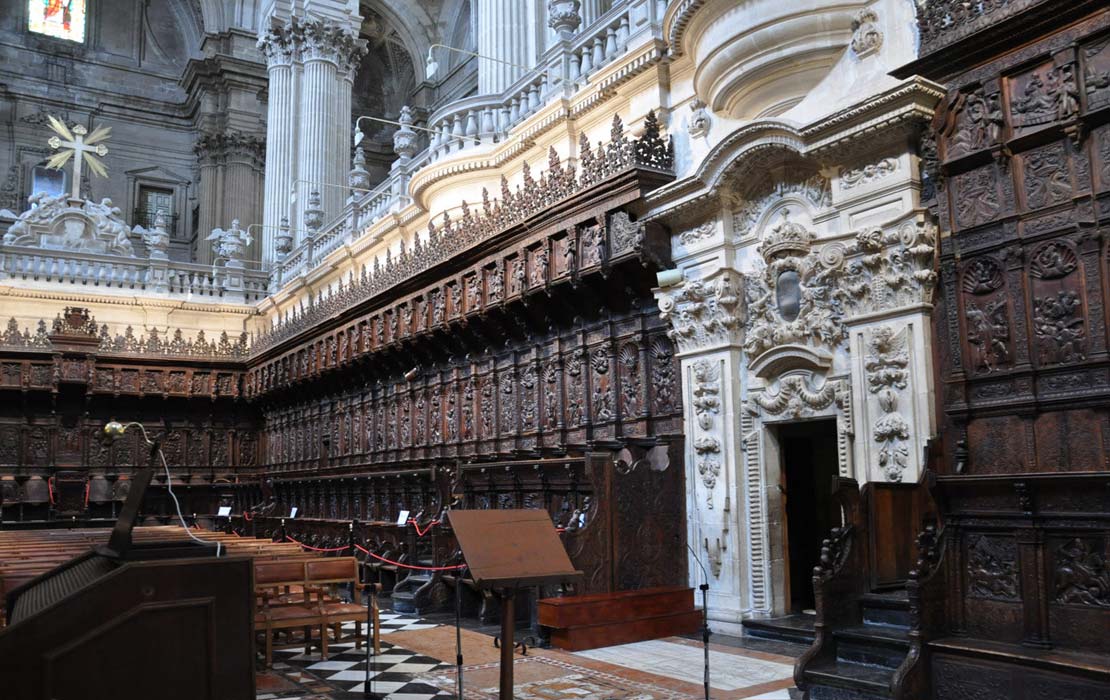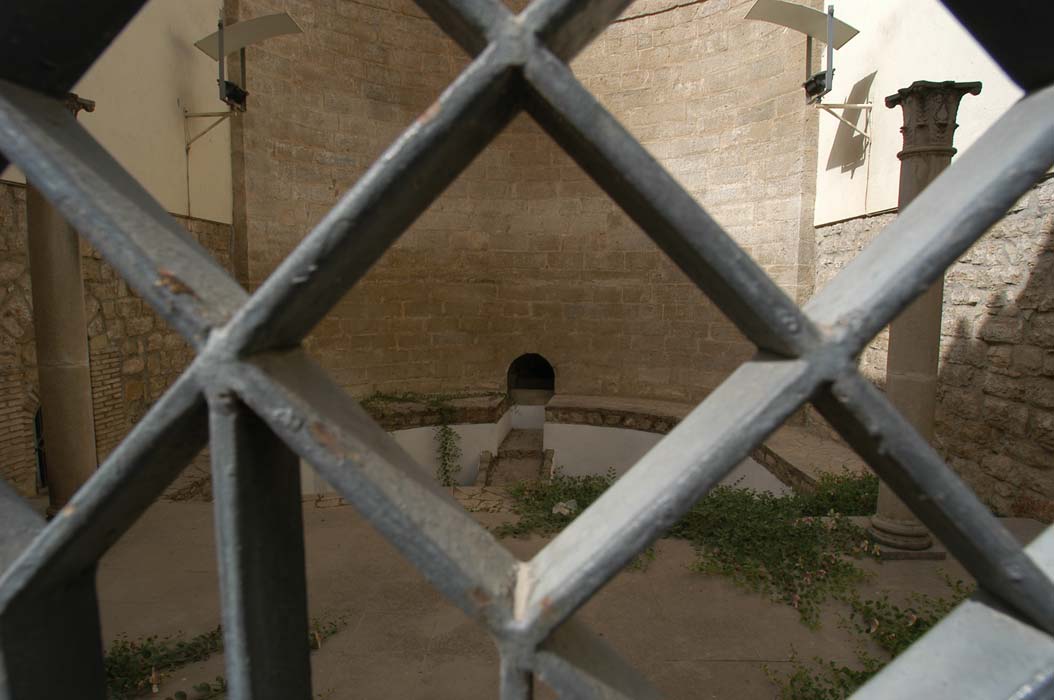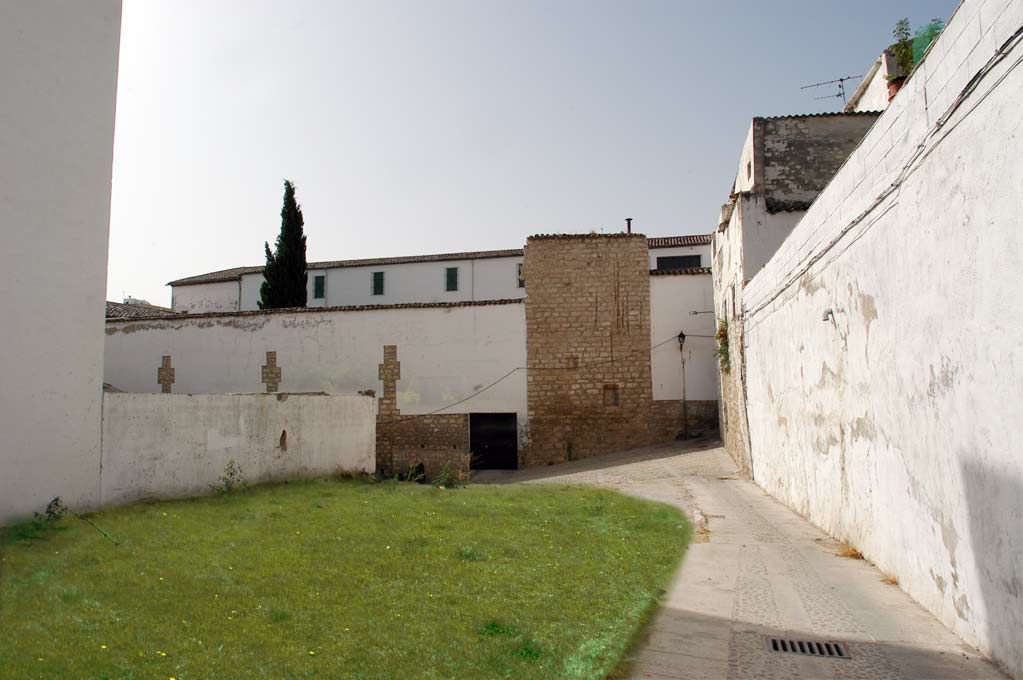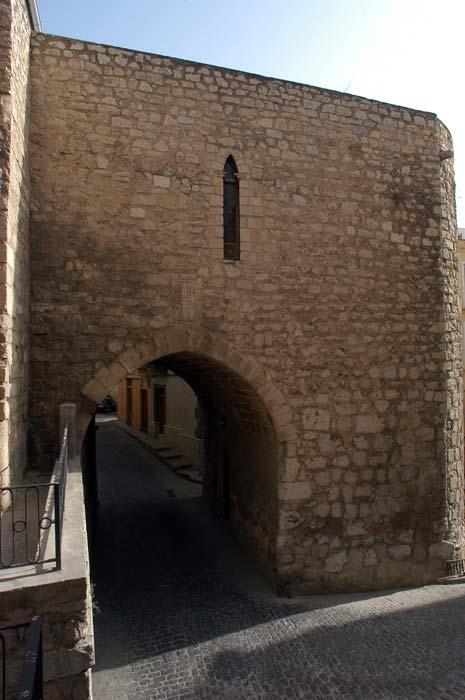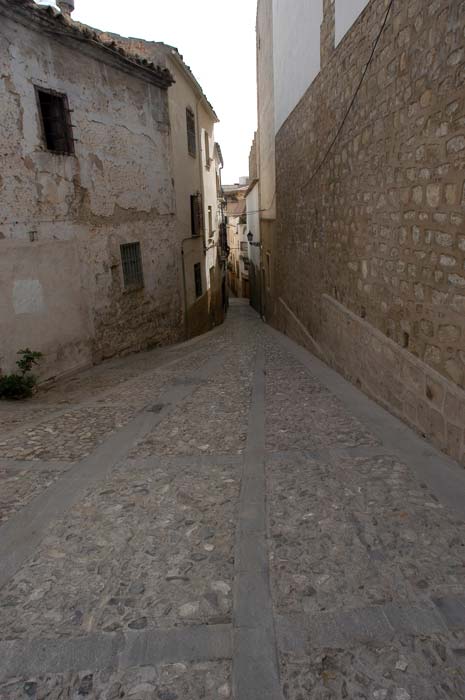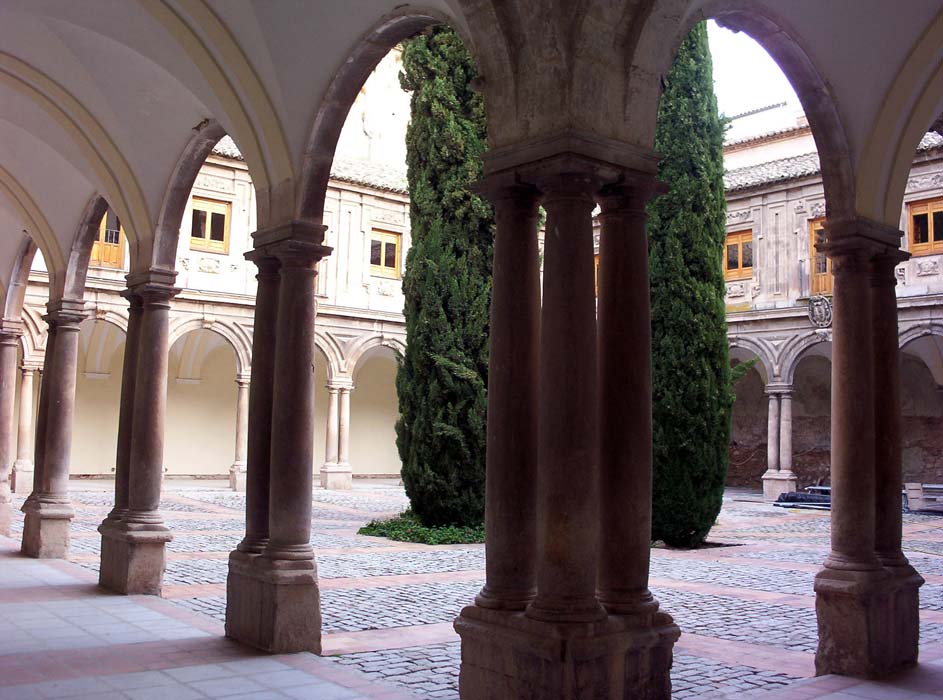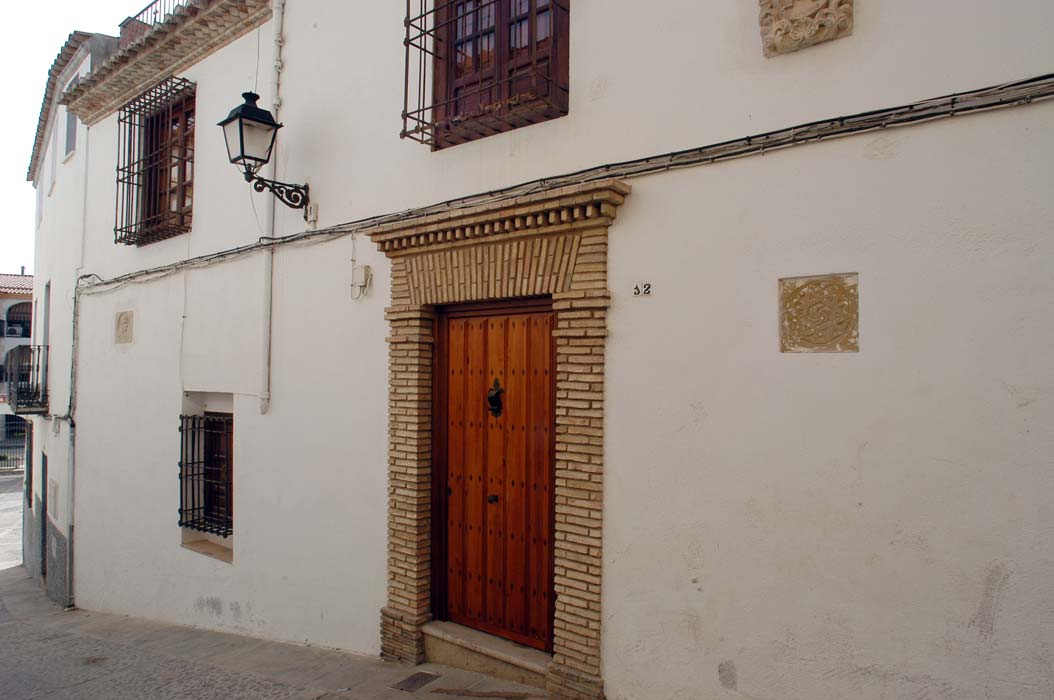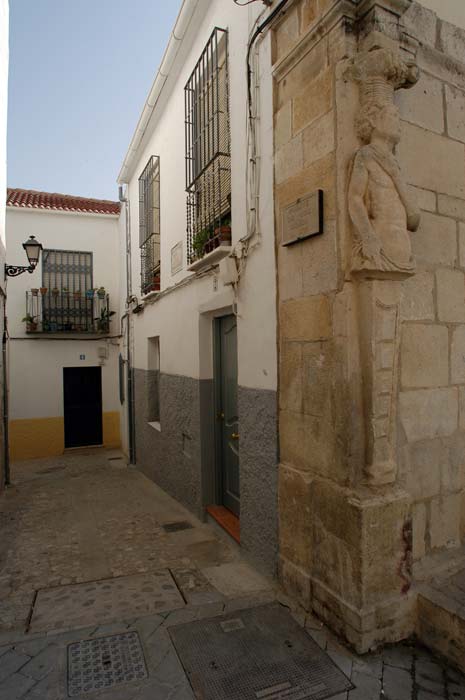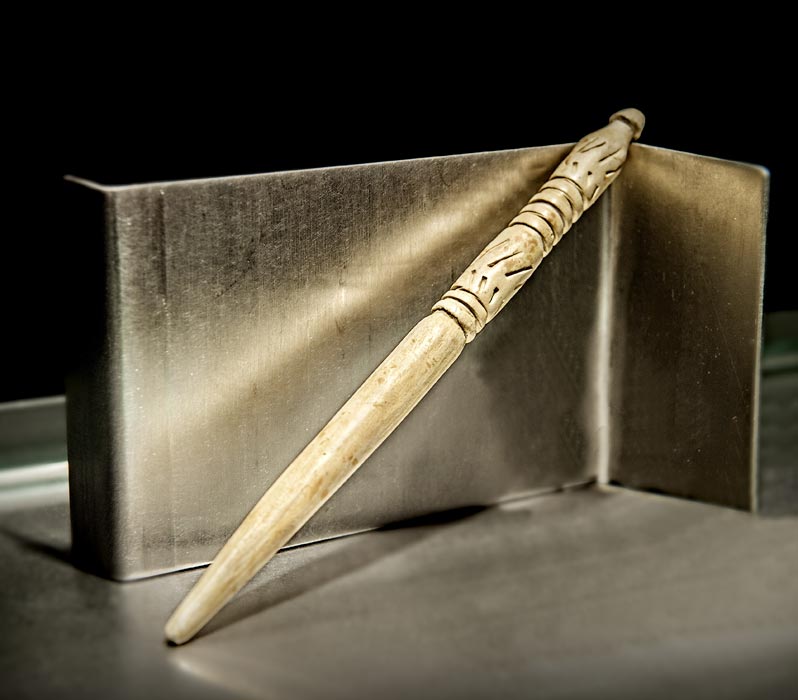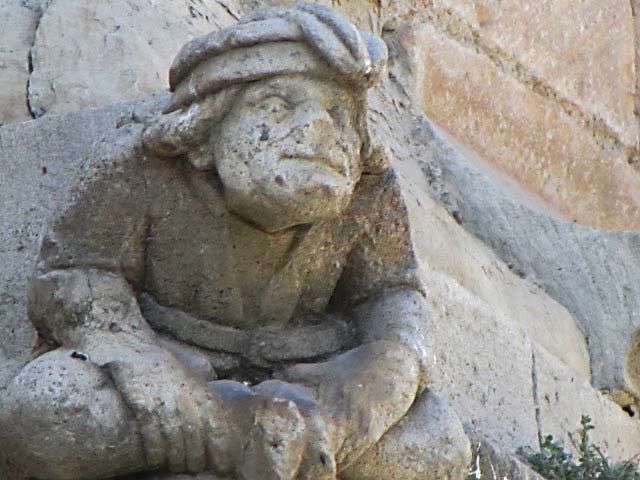The careful monitoring of the tracks of the Jews in Jaén, having settled this place
for almost twelve centuries, allows today´s traveller the time to get into the very
secret heart of the city where legends are born which are far more revealing of their
deep spirit. Outside the strict limits of the traditional Jewish quarter, the Gothic frieze of the cathedral, the Arab baths of Villardompardo or the former
Dominican convent where the Inquisition had its headquarters allow the panorama to
be completed of a Jewish Jaén which lasted virtually until the 18th century, well
after the expulsion of the Jews from Al-Andalus in 1483.
Although the first conserved documents date back almost to Visigothic times in 612
when King Sise but forbade the Jews of Jaén by law from having Christian slaves, this
presence of Jews in the city would seem to suggest that the Jewish collective arrived
much earlier. Undoubtedly, the first Jewish communities set up in Jaén in Roman times
and hence the Jewish community which inhabited Jaén was already important in the 7th
century.
The defeat of the Visigoths and the arrival of the Moslem entailed freedom for the
Jews of the city. It is more than likely that they helped the new rulers and the Jewish
community prospered during the initial age of Islamic domination in the 8th century.
It is known that in the 9th century Jaén had a synagogue and next to it a Yeshiva or centre where studies were provided about the la Torah and the Talmud. The geographer Abd al-Nūr Al-Himyari states that in the late 9th century there were four hammam or Moslem baths in Jaén powered by water from the Raudal de la Magdalena, one of which was the Hammam Ibn Ishaq, the Bath of Ben Isaac, a clearly Jewish association. This bath may have been owned by Isaac Ben Saprut, the father of the famed doctor and diplomat Hasday Ben Saprut. As from 2002 archaeological excavations have been carried out inside the urban fabric of the Jewish quarter and there, at the plot between Martínez Molina al Sur, Santa Clara in the North,
San Andrés in the West and Los Caños and Murcia in the East streets, a structure has been revealed which could be identified with a bath which may have been that of Ibn Isaac. The study is still ongoing.
Around 910 or 915 Hasday Ben Saprut was born in Jaén, the right-hand man of the Caliphs Abderramán III and Al-Hakem II.
Ben Shaprut introduced in Al-Ándalus the Jewish schools of Syria and Babylon and maintained
a close relationship with the Jewish kingdom of Khazars. As a doctor, he rediscovered the formula for preparing the theriac, an antidote
to poison and he managed to cure King Sancho el the Crass of Navarre of his obesity.
He translated from Latin into Arab the important treatise on medicinal plants of Dioscorides.
He created a magnificent library and became the patron of poets and philosophers.
Hasday Ben Saprut took Jewish-Hispanic culture to new heights.
In the 11th centiry after the breaking up of the Caliphate of Córdoba and the subsequent breaking up of Al-Ándalus into Kingdoms of Taifas, Jaén became
part of the zirid kingdom of Granada. From this time onwards it is known that in 1066 the governor of Jaén Musakhan allowed Maksan, the son of the king of Granada to keep the riches of the Jews of the city after
a revolt. At this time the Community was governed by Rabbi Isaac, a friend of Isaac Alfasi, who saw how the Moslem tolerance ended suddenly
with the arrival of the Almoravides. The Almoravides, called to the aid of Al Ándalus by the King of the Taifa of Seville, Al Mutamid,
after the conquest of Toledo, were a people from the North of Africa who preached
Orthodox compliance with the Islam doctrine. Under the command of Yusuf ibn Tasufin, they gradually took control of the Taifa kingdoms as from 1090, imposing the continuous
sacking of the cities. The Almoravide conquest obliged the Jews to be exiled to the Christian kingdoms in the north of Spain. Although a major part of the Jewish population endeavoured to remain in
Al-Ándalus, the new wave of intolerance, the Almohad, proved to be the hammer blow
to their presence in Moslem territory. The Almohad invasion devastated the Jewish quarter. Yacub ben Yusuf promulgated the death penalti for anyone not practising Islam and this made the emigration
and total abandonment of the Jewish quarterinevitable. And so it came to pass in the Jewish quarter of Jaén which was only re-established in Christian times after the conquest of the
city by King Fernando III in 1246.
To date there is no precise information about the exact location of the Jewish quarter of Jaén in Moslem times. During the Almohad intolerance, which required the Jews
to leave Al-Ándalus and take refuges in the Christian territories in the north of
Spain, the aljamas remained empty. When the Jews came back to Jaén with Fernando III,
a King who was tolerant with the Jews, it is possible that they set up in the old
Jewish quarter which they left when leaving for good to create a new quarter somewhere
else as had occurred in other Spanish cities. At present, researches are inclined
to think that they did actually occupy the same space as that inhabited previously.
During the Christian Middle Ages between the conquest of Jaén in 1246 and the mid-14th
century when the large-scale conversions of Jews commenced, the district they inhabited
seemed to fall between the current buildings of the St. Clare´s Convent and St. Andrew´s
Church. The exact limits of the old Jewish quarter are still debated today. What does seem for certain is that the current Santa Cruz
street was its main thoroughfare. It was here, behind the Saint Clare´s Monastery,
that the synagogue was located. The district was made up of a maze of narrow streets which had two or
three exits to the mains trees of the city and which would remain closed at night
to avoid any attacks.
After the reconquest the Jewish presence became a fixture very quickly as is borne
out by the number of papal documents relating to the Jews´ obligation to pay the tithe. In the late 13th century the new Jewish quarter of Jaén paid 25,000 maravedis by way of tithes to the church, practically the same as the Jewish quarter of Córdoba
paid, making clear the importance of the one in Jaén. Also at this time the Jews of
Jaén were asked to send a representative to negotiate with the Crown the amount to
be paid by the Jewish quarter at a time when the community had nearly 1,500 inhabitants.
Until the mid-13th century with Alfonso X the Wise the Jews of Jaén experienced a
new flourishing stage in their jobs as craftsmen, doctors, exchangers and royal income
collectors. This latter task was undertaken, for instance, by Abraham Secuto, Yuçaf
de Castro, Abraham ibn Aladep, Çaq de Castro and Samuel ibn Aladep. Las siete partidas (The seven-part code) of Alfonso X indicates specific aspects of cohabitation between Jews and Christians.
The Jewish quarter of Jaén benefitted from this cohabitation and according to the legal standards, a
space was defined and autonomy granted which were similar to that previously given
in Castile to the Jewish quarters where their own court settled any disputes and disagreements
amongst Jews and even taxes were collected for the King.
However, in the second half of the 14th century a time of persecutions began against
the Jews which would culminate in their final expulsion by the Catholic Monarchs.
In 1368, during the war between Enrique II, to whom the city of Jaén was loyal, and his brother Pedro I, known as a Jewish protector, the Nasrid troops of Granada, loyal to Pedro I, entered the city of Jaén and took prisoners as many as 300 heads of families from the Jewish community to Granada as written by Samuel Zarza in his book Fuente de Vida (Fountain of Life):
Jaén fue tomada por la fuerza y mataron a un número de hombres. Mas en los judíos
ordenó el rey don Pedro que no pusieran la mano porque no tenían culpa. Pero que si
querían cautivarlos, los cautivasen. Entonces llevaron prisioneros al reino de Granada
hasta trescientos padres de familia que vivían en Jaén.
This figure of 300 heads of families is equivalent to around 1,500 people, a very high number which would make Jaén one
of the most important in Spain in the Late Middle Ages.
During the second half of the 14th century, partly because of the sermons of the Archdeacon
of Écija, Ferrand Martínez, saw the majority of the forced conversions of Jews and
the latter had to transform their synagogue into the parish of Santa Cruz in 1391, thereby forming with time the new congregation or district of Santa Cruz. From that time onwards the convert population lived not
only in the space of the old aljama but also spread around the districts of St. Peter´s, St. Andrew´s, St. John´s or
San Ildefonso.
In 1473 the Constable Miguel Lucas de Iranzo, governor of the city of Jaén and the protector of Jews and converts, was murdered whilst praying in the Cathedral. Once the constable had been murdered,
the angry mob went in search of Juan López de Marruecos, the converted Mayor of Torredelcampo fortress, to slaughter him along with his family.
The enraged people then turned against the converts convinced they were still Jews. As Juan de Mariana says in his Historia General de España (General History of Spain):
Esto fue a causa de que el odio y la envidia de la muchedumbre se revolviese contra
él de tal guisa, que con cierta conjuración que hicieron un día le mataron en una
iglesia en que oía misa. La rabia y furia fue tan arrebatada y tal el sobresalto,
que apenas dieron lugar para que Doña Teresa de Torres, su mujer, y sus hijos, se
recogiesen en el Alcázar. Como el Condestable pusiese las rodillas para facer oración,
uno del pueblo, que más cera dél se falló, le dio tan grande golpe con una ballesta
de acero en la cabeza, que dio en él en el suelo, e todos los que cerca dél estaban
lo firieron con lanzas e espadas de tal manera que no quedó en él señal de persona
humana, e luego todos juntos fueron a robar e matar los conversos.
In 1483 the Catholic Monarchs set up the third Inquisition Court in Jaén, after those of Seville and Córdoba. This demonstrates the high number of convertsthere were in Jaén at this time, many more than in other cities. The first inquisitors
were put up at a house which Constable Iranzo owned in said Jewish quarter. Later, the Inquisition Court was located at St. Catherine the Martyr Convent (the Dominican Convent, now the Provincial History Archive) where it remained until
1526. During the Middle Ages the Diocese of Jaén ha two major bishops holding the
title of Grand Inquisitors. The first was Diego Deza, a man in the confidence of the
Catholic Monarchs and the tutor of their son, Prince Juan. Great Defender of Colombus´
adventure in America, he bore much influence on the Queen Isabel to support the voyage.
This bishop ran the diocese of Jaén from 1497 to 1500 at which time it was transferred
to Seville where he died and is buried. The other grand Inquisitor was his successor,
Alonso Suárez de la Fuente del Sauz who, during his episcopate, managed to prevent
the Jaén Court from being moved to Granada. He occupied the cathedral of Jaén from
1500 until 1520. This bishop is buried at the Capilla Mayor or Santo Rostro (Main
or Holy Face Chapel) of the Catedral.
Finally, the Expulsion Edict signed by Catholic Monarchs in 1492 entail the mass exiling
of the Sephardis who settled in Morocco, Portugal, Italy, Greece, Turkey and the Balkans.

